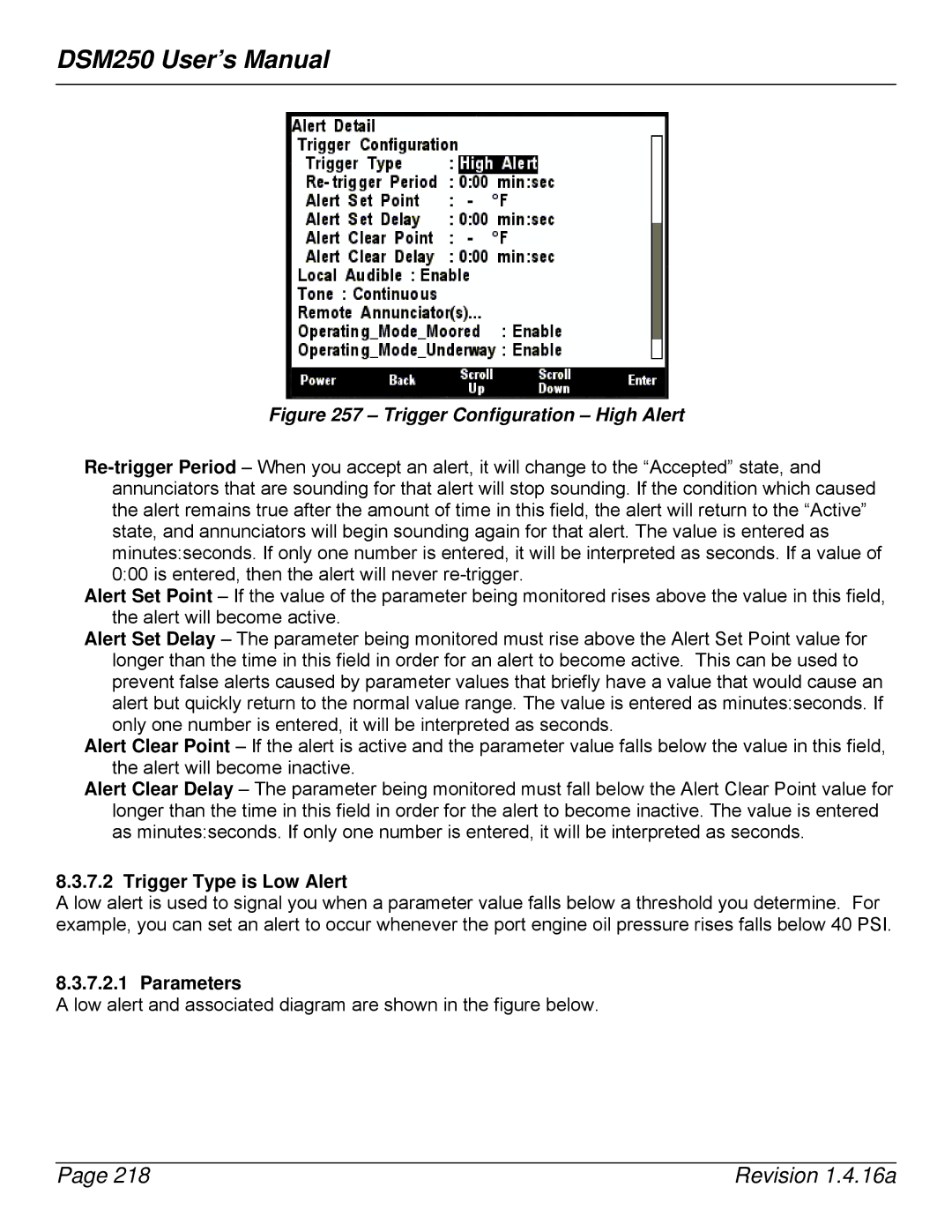
DSM250 User’s Manual
Figure 257 – Trigger Configuration – High Alert
Alert Set Point – If the value of the parameter being monitored rises above the value in this field, the alert will become active.
Alert Set Delay – The parameter being monitored must rise above the Alert Set Point value for longer than the time in this field in order for an alert to become active. This can be used to prevent false alerts caused by parameter values that briefly have a value that would cause an alert but quickly return to the normal value range. The value is entered as minutes:seconds. If only one number is entered, it will be interpreted as seconds.
Alert Clear Point – If the alert is active and the parameter value falls below the value in this field, the alert will become inactive.
Alert Clear Delay – The parameter being monitored must fall below the Alert Clear Point value for longer than the time in this field in order for the alert to become inactive. The value is entered as minutes:seconds. If only one number is entered, it will be interpreted as seconds.
8.3.7.2 Trigger Type is Low Alert
A low alert is used to signal you when a parameter value falls below a threshold you determine. For example, you can set an alert to occur whenever the port engine oil pressure rises falls below 40 PSI.
8.3.7.2.1 Parameters
A low alert and associated diagram are shown in the figure below.
Page 218 | Revision 1.4.16a |
